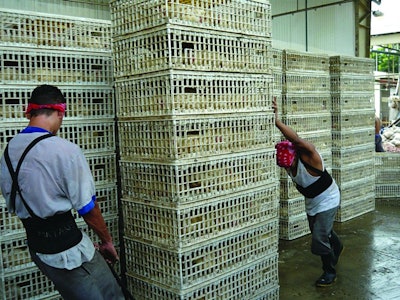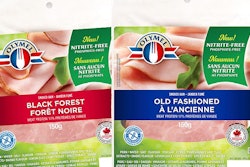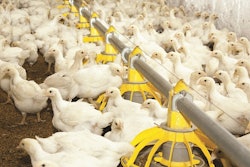
The upstream management concept supposes that there is no destination in managing a business, only a journey. Changes to upstream management can be broad ranging, slow and spread over a wide area, but when successfully applied they can bring lasting improvements to broiler processing.
Tackling the upstream requires a systemic approach – seeing a group of operations as a whole. The approach seeks to prevent problems and, should they occur, it allows them to be quickly remedied.
Barriers to overcome
Entrenched attitudes can be a barrier to the successful functioning of upstream activities.
Problems may be seen as inevitable, or staff may be resigned to doing things the way that they have always been done. Similarly, lack of commitment may be an issue, or a failure to take responsibility.
Tunneling, where employees fail to address potential problems and concentrate on the immediate, may also be an issue. This may be seen, for example, in a failure to maintain an adequate spare parts supply. A plant may be able to function until the needed spare part arrives, but below capacity, and there may be an acceptance that this is simply how things are.
Tackling the obvious
Sometimes, issues may be obvious, but are simply ignored. Rigid shackles on the overhead conveyor can make hanging birds difficult. Replacing these shackles with expandable alternatives would be an easy fix.
Similarly, dragging stacked crates across the floor using a hook will wear them down, shortening their useful life. Moving them on trolleys, however, would prevent this damage and result in workers tiring less quickly.
Sometimes, failing to address issues may stem from a lack of commitment. This may be apparent, for example, when chicken parts are left on the floor or stuck to machines, as those responsible for taking them to disinfection stations fail to collect them in a timely manner. This can lead to bacterial proliferation. Leaving fans running in the receiving area when not needed would be another.
To prevent issues occurring, a culture of actively seeking out situations and activities that result in higher operational costs needs to be created. Individuals need to be given responsibility for this task if it is to work, but everyone ensures that losses and operational costs are constantly as low as possible.
Avoid tunneling
All equipment must run properly. To ensure this, plants must keep a reserve of spare parts, be they locally available or imported. All too often, however, those departments involved in ensuring this stock – maintenance, storage, purchasing and treasury – fail to coordinate their activities, and this can result in costly crises.
When these crises occur, given that replacement parts are not on site, some surprising innovations may occur. For example, when rubber fingers become worn on the first plucking machine, they may be replaced with fingers that are in a better state of repair from the last machine. This results in more bird handling to remove remaining feathers, and this can lead to carcass damage and rejection, for example, through wing dislocation.
Transforming the system
The rules that are currently followed to meet company parameters may need altering, and this may even result in exceeding company parameters.
Take, for example, the number of permitted dead on arrival (DOA) birds. If the year is divided into a cold season and a warm season, there will usually be two parameters for permitted DOAs. However, with the correct physical and operational infrastructure to keep birds comfortable from capture to hanging, it should be possible to work with a single parameter.

Alert to early warnings
When operations are not running as they should, alarms need to be raised. When birds arrive at the plant, for example, observing fecal matter may reveal that feed withdrawal has been too long. This information must be passed to the evisceration team, allowing them to adjust their work accordingly.
Evaluating success
Whether changes have resulted in success or not needs to be evaluated. If, for example, management requires an increase in dry carcass yield, the response may be to alter where the neck is cut or to leave the fat on the gizzard. However, this type of change, while increasing yield, may generate customer complaints due to poorer carcass quality – not necessarily a success.
Avoid causing harm
Companies need to micromanage industrial safety and ergonomics to ensure worker wellbeing. Where, for example, hanging birds on the overhead conveyor is concerned, ergonomics are usually good. However, where it may be possible to improve is in the positioning of the cages of birds to be unloaded. Simply bringing cages closer to workers can mean that, through extending their arms less, they tire less quickly.
Poultry processing plant changes help staff, raise output

















